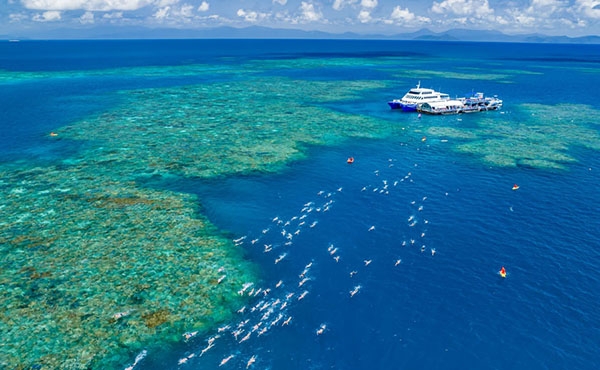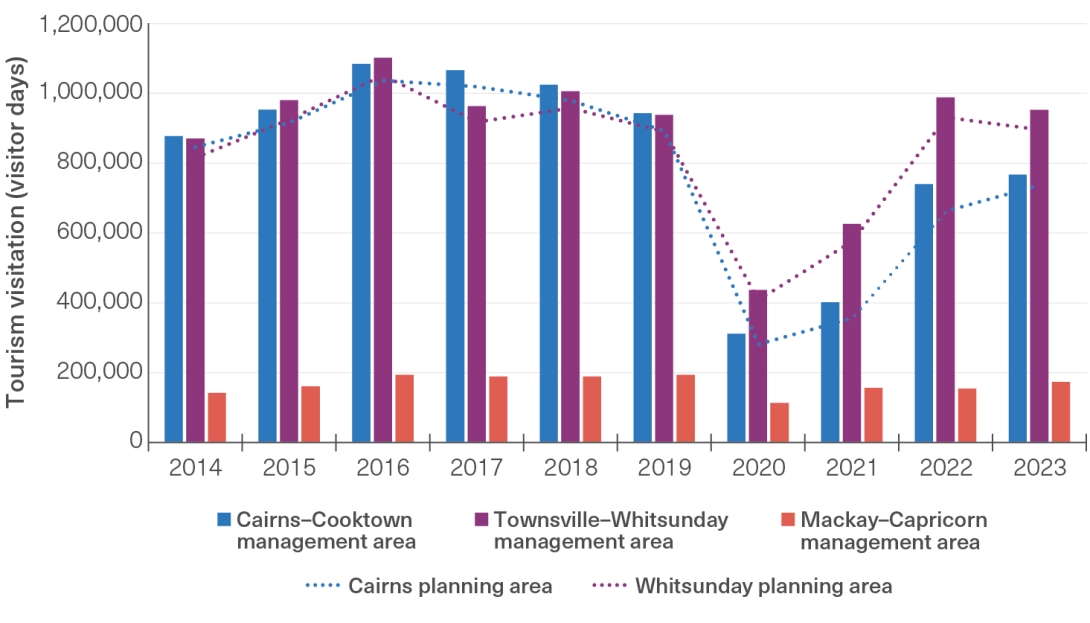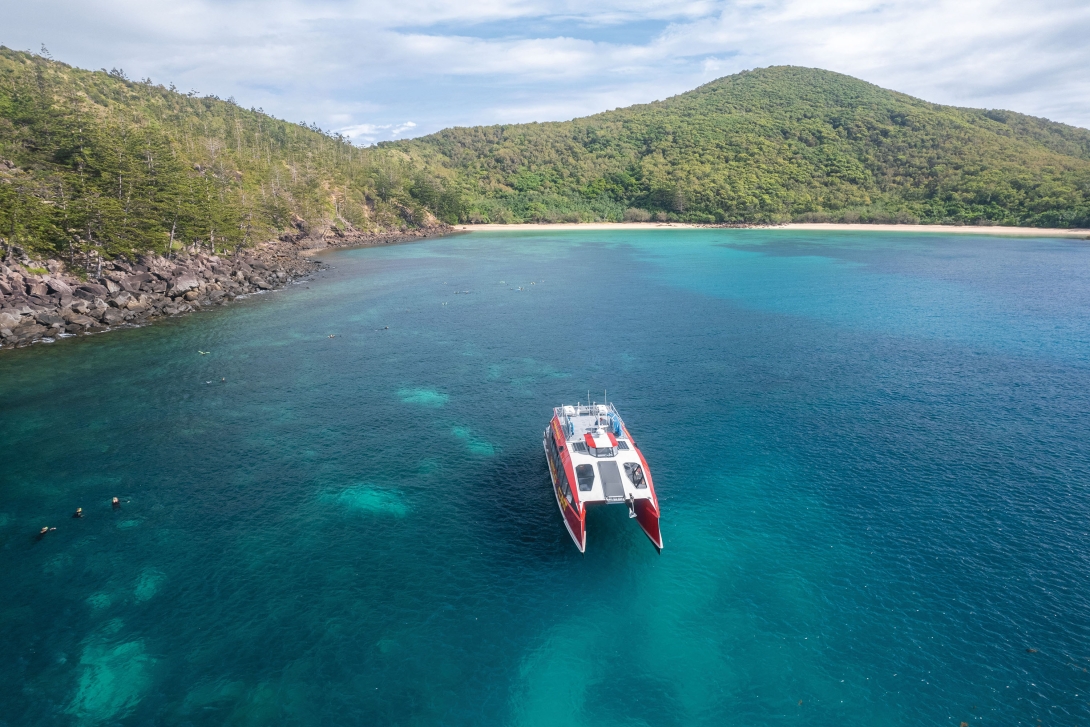The border closures also redistributed tourists from international hubs such as Cairns towards domestic destinations in the southern parts of the Region that are closer to large population centres in south-east Queensland. While visitation in both the Mackay–Capricorn management area and Whitsunday planning area decreased in 2020 (by 41 and 54 per cent of 2019 levels, respectively), the proportion of the total Reef visitation to each location increased by 4 per cent. In comparison, the proportion of total visitation to the Cairns planning area decreased by 12 per cent in 2020.1174
The pandemic appears to have influenced the use of bareboats — the hire of self-guided vessels. Bareboat activities are historically most popular in the Whitsunday planning area and less so in the Hinchinbrook planning area. However, usage in Hinchinbrook area had a notable increase between 2019 and 2021 (from 176 to 1203 visitors per year), reflecting an approximate 2-fold increase from the previous peak (2016).1174 The change is assumed to be associated with the COVID-19 public health restrictions on the number of persons in gatherings and in close contact.
The pandemic also caused significant operational impacts on the commercial marine tourism industry; such as, increased fuel costs and shortages in skilled staff. Although tourism to the Region is rebounding, it is expected to take several years before it returns to widespread pre-pandemic volumes. National forecasts suggest stabilisation of domestic travel in 2023 after strong growth in 2022, and that international travel to Australia will exceed pre-pandemic levels in 2025.1177 In 2023, the marine tourism industry continues to experience difficulties in attracting, training and retaining staff (Section 7.3.1). Since 2019, the industry continues to consider product diversification, including reef rehabilitation through site stewardship 32,1078 and novel aesthetic opportunities by installing underwater artwork (Section 4.2.2).
Tourist perceptions of the Reef can be affected by major events, such as mass coral bleaching. These events, and the ways in which the events are communicated to the public, may affect visitation to the Reef. A 2017 survey of Reef tourists showed declines in the overall satisfaction with their Reef experience and in their perceptions of its aesthetic beauty after the 2016 and 2017 mass bleaching events.1077 Negative emotional responses to the Reef, such as sadness, disgust and fear, by tourists increased after the events, and this result was not influenced by whether they had personally observed the impacts. However, the bleaching events also lead to expressions of empathy for the Reef through increased ratings of place values, identity and protective sentiment. How these changing perceptions affect the condition and trend of commercial marine tourism remains a knowledge gap.
The condition (and trend in condition) of First Nations tourism in the Region is not well reported. Special tourism permissions within the Marine Park that are reserved for Traditional Owners remain unallocated.1175,1176,1178 Through program and management initiatives sponsored by Reef managers and government, partnerships and engagement of First Nations peoples and the broader marine tourism industry in the Region continue to strengthen.1179,1180 Since 2019, Reef mangers have made improvements towards implementing co-management principles recognising Traditional Owner aspirations in commercial activities in the Region (Chapter 7).1120,1181,1182




